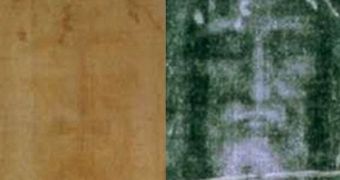Tonight, March 31, the History Channel will be running a two-hour-long TV special, in which the actual, three-dimensional face of Jesus Christ will be revealed. The work that allowed for this to become possible comes from an artist, who managed to use the famed artifact called the Shroud of Turin to produce an accurate representation of the man that was buried with it. Many Christians believe that the funeral cloth was the one that covered the body of Jesus Christ as he was entombed.
Significant controversy envelops the Shroud of Turin. While clergymen and believers say that it has indeed been blessed by the touch of the divine body, scientists have produced a vast body of work showing that the artifact is a forgery. An Italian researcher, for example, produced a cloth that looked and had the same properties as the Turin artifact, while three of the most well-equipped laboratories in the world for carbon-dating, in Oxford, Zurich and Tucson, Arizona, determined the shroud to have been produced 1260 and 1390. But, as more evidence mounts against its authenticity, more and more people begin to defend it, for reasons that elude science.
Now, using digital technology, computer artist Ray Downing, the president of Studio Macbeth, managed to produce an accurate, 3D representation of the face that was imprinted on the Shroud of Turin. The expert also used the blood encoded in the artifact for the task. The end result is the actual face of Jesus, provided that the person actually existed and that the cloth is authentic. On the TV special, the actual representation of his face will be revealed to the general public. Representatives from Studio Macbeth say that the model they obtain does not resemble the popular face people attribute to Jesus Christ in too many ways.
“We 'lifted' the blood and isolated it [on the computer] so that it would sit 'in air' [on a transparent background],” says Downing, adding that the blood on the body that was enveloped in the shroud was deposited as the cloth was being wrapped around the man. The computer-generated image (CGI) is the result of a group of computer artists using the most advanced technology available to produce a model of the body and face that were inscribed on the shroud. “I have a lot of information about that face and my estimation is we're pretty darn close to what this man looked like,” Downing adds, quoted by The Daily Mail.

 14 DAY TRIAL //
14 DAY TRIAL //